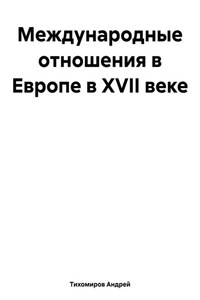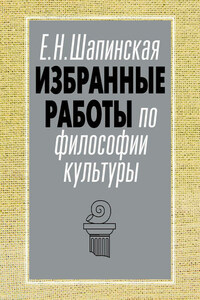The culture of China has developed over several millennia in the process of socio-economic development of individual ethnic groups, their subdivisions and groups in various natural geographical conditions, in the interaction of these ethnic communities among themselves and with the peoples of neighboring countries. The formation of the material culture of the peoples of China was affected by the uneven development of productive forces and industrial relations in different parts of the country, the specifics of the environmental situation, reflecting the diversity of physical and geographical features of various regions of China.
Pottery (on the basis of which the manufacture of earthenware and porcelain developed), wood processing, weaving mats, baskets and other things from flexible willow, reeds, grass and straw, spinning and weaving (in particular, silk weaving), cooking various foods are the most characteristic of traditional types of home production and handicrafts.
According to the rules of Chinese traditional architecture, frame-pillar houses are erected on high platforms made of rammed earth, lined with stone. Pillars connected to each other by horizontal beams are installed on the platforms. Rafters are laid on the beams, which support a heavy four-pitched tiled roof with far-projecting cornices. The latter are necessary to protect the walls of the building from rain; at the same time, so that the large cornices do not prevent sunlight from entering the room, they are slightly raised, and the corners of the roof are given an upward bend characteristic of Chinese architecture. The entrance to the building according to the rules of traditional Chinese architecture is located on the south side. On the same side, wide window openings are usually arranged, and a blank wall extends to the north, protecting the building from cold winds. The floor in peasant dwellings is usually earthen; it usually has an elevation (adobe or brick) that occupies a significant area (in the northern Chinese it is heated by hot air) – this is a "kan", a sleeping bed that replaces the seat during the day. At night, the "kan" is covered with felts or a reed mat and a thick cotton blanket – a mandatory accessory of the Chinese family.
Wheat tortillas and pampushki, porridge made of millet, chumiz and gaolan (also made of rice among Koreans), various dishes made of beans, vegetables and tree mushrooms are common from traditional food. Chinese and Koreans prepare meat dishes mainly from pork or chicken; Hui and Uighurs – from lamb or beef (pilaf is very popular among Uighurs). The Chinese and Koreans prefer various dishes from river and sea fish, crustaceans, mollusks, holothurias (trepangs), algae and other "gifts of the sea". Various spicy seasonings (soy sauce, red pepper, vinegar, etc.) are in great use everywhere.
The traditional costume of the farmers of Northern China is very characterized by the predominance, both men and women, of swing-out robes, jackets and sweatshirts with almost complete absence of deaf forms of clothing worn over the head. The Chinese (Han) have developed a peculiar cut of clothing with an additional sewn left hollow and a smell to the right, which has become one of the most stable ethnic signs of the Chinese people. Waist clothing is trousers with a wide step, borrowed from Central Asian nomads. Currently, the suit is made mainly of blue cotton fabric (in winter on cotton wool). The shoes are characterized by cloth shoes or woven sandals. Hats of various types are made of hats, and the Islamized peoples – Hui, Uighurs and others – have skullcaps.
The foundations of China's spiritual culture were laid in the unwritten cultures of Proto-Chinese tribes who lived in the Yellow Valley in the II millennium BC. These tribes created a spiritual culture high for that level of development of society, the guardians of which were priests of religious cults, shamans, soothsayers. At that time, the basic concepts of Chinese traditional natural philosophy were developed: the masculine principle of the universe yang and the feminine – yin, the five primary elements of the universe – wood, metal, earth, water, fire. This time includes the creation of a chronology and calendar based on observations of celestial bodies and annual cycles of nature, a mythological explanation of the origin of the Universe, the Earth, man, the change of seasons, day and night, weather changes.
The ancient Chinese worshipped many deities, however, the main object of their worship was the ancestors, whose cult arose in the conditions of a strong family organization with a clear distribution of social roles within it. The basis of relations between people in the societies of Proto-Chinese tribes was the strict subordination of the younger to the older, both in the family and in the state organization.
In the second half of the first millennium BC, the main currents of Chinese philosophy were formed, which served as the basis for the development of philosophical and social thought in this country until modern times. Chinese traditional philosophy continues to influence the social thought of modern China. Each of the philosophical schools of the Zhou era developed its own special set of ideas. All schools of that time recognized the authority of the oldest written texts, considering them the source of their teachings. Confucius' teaching developed primarily problems of morality and ethics. Confucius himself, the ideologist of the ancestral nobility of the era of the "struggling kingdoms", believed that the mores and social orders that existed under him were formed as a result of forgetting the true mores and orders that existed during the ancient Xia dynasty (suppose. XXI— XV centuries BC) and at the beginning of the reign of the Zhou dynasty. Disciple of Confucius Mo Tzu (479-381 BC E.) considered universal love to be the main principle of relations between people in the family and society, which meant rejecting the division of people into noble husbands and commoners and recognizing their equality in the sphere of personal life. Mo Tzu called for reducing personal consumption costs, opposed lavish funerals, which were required by Confucian ritual, against music and entertainment. In the sphere of public life, he demanded reverence for wisdom, respect for equality, refusal to transfer power in the state by inheritance. In the sphere of interstate relations, he called for the destruction of wars and the resolution of interstate conflicts by peaceful means. The philosophical doctrine of legalism, which was developed by politicians and philosophers Shang Yang, Shen Buhai and others, considered a complex of problems of state structure and public administration. The doctrine of legalism is the theory of a despotic state. The supporters of legalism saw the purpose of the state organization as ensuring military and economic power, which can be achieved only by creating a strong state apparatus and a powerful army. In order to remove obstacles on the way to achieving this goal, public administration should be based on the law, before which all subjects are equal, regardless of their origin and social status. The authority of the law should be supported both by severe punishments, from which no one can be free, and by incentives – with the help of a system of ranks of nobility assigned for services to the state.












